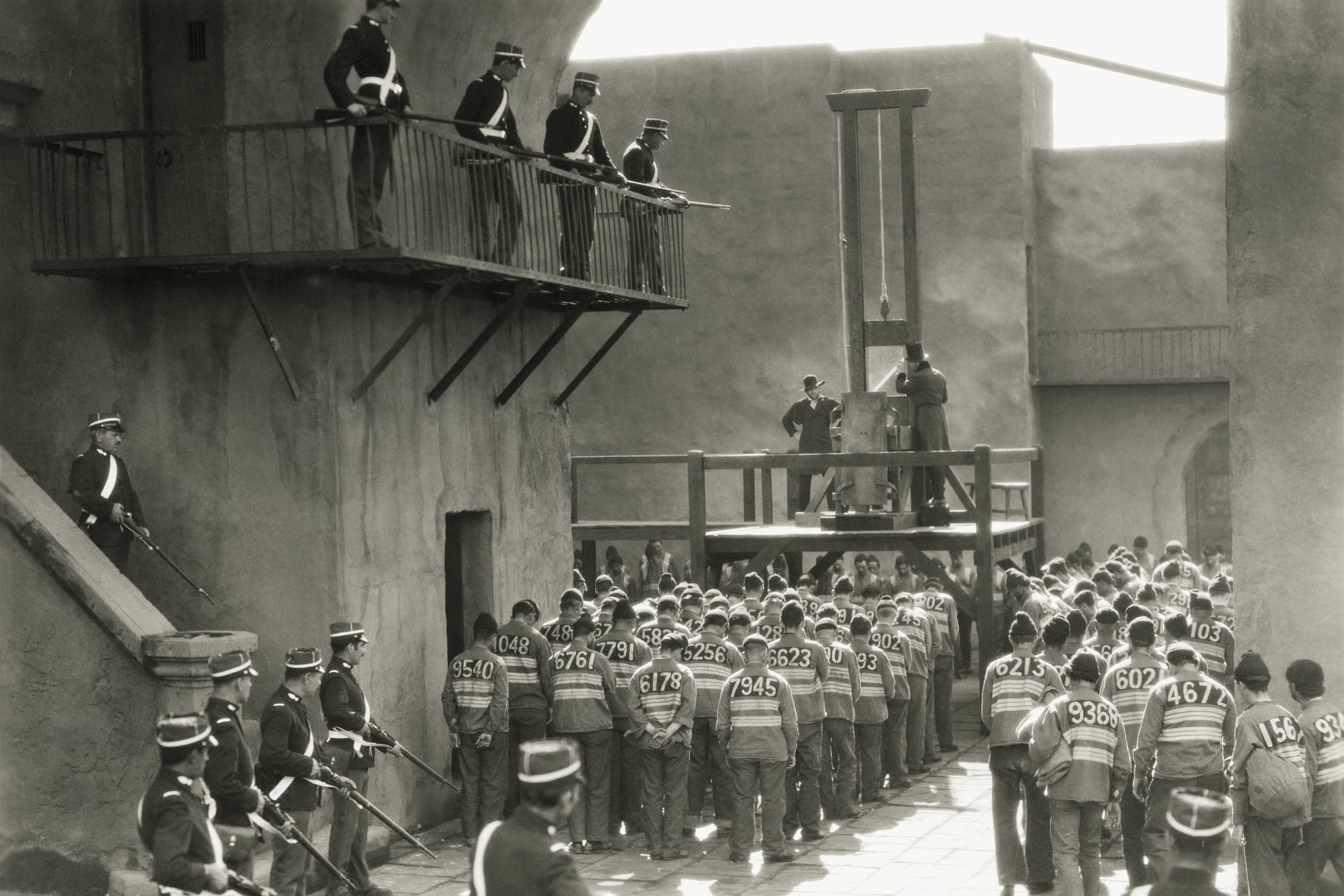Death Row Dilemmas: The Sentencing and Execution of Ronald Smith Jr.
In the early hours of the morning, on November 8th, 1994, Casey Wilson was working his shift at a Circle K in Huntsville, Alabama. That morning, 23-year-old Ronald Bert Smith Jr. came into the station with the intention to rob it. He pistol-whipped Wilson and forced him to the convenience store restroom where he shot him. Wilson died of his wounds. To avoid detection and identification, Smith removed the store’s surveillance videotape from that night and brought it with him.
Ronald Bert Smith Jr. was convicted of the first-degree murder of Casey Wilson. In keeping with the common practice in Alabama, after the defendant was found guilty his trial moved on to a second phase—the sentencing phase. In this phase, character testimony and evidence pertaining to mitigating and aggravating factors are introduced to give context to the jury to help them decide what the punishment for the crime should be. Crucially, this is the stage at which it is determined whether aggravating factors involved in the case make the death penalty an appropriate punishment. In Smith’s case, evidence came to light that his crimes were the result of a downward spiral into alcoholism. Witnesses testified that Smith’s alcohol use began early in youth as a response to childhood abuse. In light of this evidence, in a 7-5 decision, the jury recommended that Smith be sentenced to life in prison rather than given the death penalty. The judge in the case did not take the jury’s recommendation, opting instead for a death sentence. Smith was later given an execution date of December 8, 2016.
Fast forward to January 12th, 2016, when the Supreme Court issued its opinion on a similar case—Hurst v. Florida. Timothy Hurst was tried and found guilty of the 1998 murder of his coworker at a Popeye’s Chicken as part of a robbery gone wrong. He was sentenced according to a Florida law that allowed judges the final say on whether to issue the death penalty to a defendant. In the majority opinion, written by Justice Sotomayor, the Supreme Court ruled that, “the Sixth Amendment requires a jury, not a judge, to find each fact necessary to impose a sentence of death.” In other words, the court found laws that allow a judge to have the ultimate say on whether aggravating factors involved in a case warrant imposition of the death penalty to be unconstitutional. This ruling threw Florida and states with similar laws into a tailspin as death row inmates rushed to file appeals.
This decision had the potential to change the legal landscape for Ronald Bert Smith Jr. Indeed, on the very evening he was slated to die, The Supreme Court issued not one, but two temporary stays to his execution. Though justices Ruth Bader Ginsburg, Stephen Breyer, Sonia Sotomayor and Elena Kagan indicated that they would have blocked the execution, doing so requires the votes of five justices. Smith was executed at 11:05 pm on the night of December 8th. In a tragic irony, it appears as if all did not go well with his execution. Alabama uses the sedative midazolam as the first drug in a three-drug lethal injection cocktail. Midazolam acts as a sedative so that the patient will not feel pain associated with the other two drugs in the cocktail. After the sedative was administered, Smith heaved and coughed repeatedly and raised his hands twice during consciousness checks. Smith was issued the second two drugs anyway. A challenge to the constitutionality of this method of execution was one of the elements of Smith’s appeal.
The Supreme Court has settled the legal issue. It is important, however, to recognize the difference between legality and morality. Some decisions that the courts make, though they are legal, may not be moral. There is a healthy debate on the question of whether judges should be able to make these sorts of unilateral decisions in death penalty cases.
Some argue that judicial discretion is crucial. Judges know the law. They have experience. They can compare the severity of different crimes. This makes them much better suited to make sentencing decisions than the jurors involved in the case. Most of the members of the jury are unlikely to have been involved in the criminal justice system at all. They simply don’t have the same level of experience to bring to the table.
What’s more, some argue that, because of their experience and knowledge, judges will be less likely to fall into certain traps or to make certain kinds of mistakes. Jurors, for example, may be particularly susceptible to the charisma or charm of a defendant. Though the evidence may clearly indicate guilt, a juror may be less likely to punish a defendant severely if that defendant is likable. The reverse may be true if the defendant is unlikable, but committed the exact same crime.
A related consideration is that jurors might be more inclined to make decisions, either consciously or subconsciously, that are motivated by racism, sexism, or other kinds of unjustified bias. As experienced professionals, judges are aware of such bias and can actively protect against it in their own judgments. If a judge fears that racial bias is factoring in to a jury’s sentencing decision, they can stop it before it harms the defendant any further.
Others argue that decisions about something as serious as whether to take a person’s life should never be made by a single individual. That is, quite simply, too much power to put in the hands of any one person, regardless of their level of knowledge or experience.
Critics of judicial discretion in sentencing also argue that, though protection against bias is important, it is naïve to think that judges won’t themselves, be biased. If they are, then the bias is amplified. If juries make sentencing decisions, there will, at least be some checks against decisions motivated by bias. If judges make decisions unilaterally, there clearly are no checks.
Some argue further that the right to a trial by a jury of our peers extends past the trial for guilt, into the sentencing phase. There is a reason that Western culture has a rich tradition of providing trial by jury. Agents of the state shouldn’t be the ones making the decisions. It should be members of the community. The community can bring to bear its values and customs. A defendant has a right to be evaluated by a set of people with common experiences who might be able to relate to the defendant’s set of hurdles and motivations.
Still others argue that there is no perfect system to ensure fairness in sentencing. Jurors can be biased. Judges can be biased. Bias is seriously problematic when someone’s life is on the line. If there is no foolproof way to prevent bias in the criminal justice system, some argue, we shouldn’t have the death penalty at all.
As this case unfolded, its ethical dimensions became more profound and varied. Is a history of alcohol abuse a factor that should be considered in sentencing? Is this type of lethal injection a morally permissible way of carrying death penalty? If The Supreme Court has ruled a law unconstitutional, should every inmate who might have been affected by that law be granted an immediate stay of execution? And, most fundamentally, should the state be in the business of killing its citizens at all?





